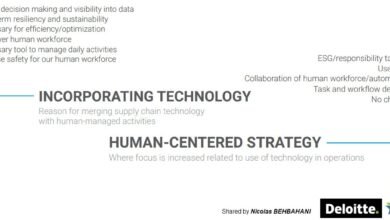
By | Samadhan Belose
The key priority during this crisis should be to ensure the well-being of your team. Leaders across industries have been making proactive decisions to support their employees. Since the COVID-19 pandemic will last for many more months, if not years, you need to define your approach for the long haul.
Two strategies have come to the fore.
The first one says that leaders should inform the magnitude, the challenges, and the after-effects of the pandemic. They shouldn’t cover up details and tell the truth as it is.
The second strategy insists that leaders should think and act upon this crisis in three phases — the shelter-in-place phase, the reopening phase, and the post-pandemic phase.
By looking at both these strategies, leaders can help their teams counter each phase’s unique challenges and chart their future trajectory in a controlled way.
- The shelter-in-place phase
In this phase, leaders have adopted the work-from-home strategy. This approach ensures that employees maintain social distancing to protect themselves from contamination. ERP systems have played a significant role in this strategy as they can easily manage collaboration tools and enable teams to work together from remote places.
Companies have also sanitized work areas and brought a change in the way they operate. For example, supply chain companies are adopting contactless delivery. In this crisis, when most companies ask employees to leave, some leaders are working hard not to take that step. Some of them have gone out of the line and increased the pay for front line workers. Others have instituted employee relief funds to ensure the financial security of their workers.
Few leaders are also periodically communicating with their workers through video conferencing to explain the gravity of the situation to them. Besides, some companies are arranging yoga and meditation sessions to keep their employees away from mental pressures and anxieties.
Facts and observations indicate that along with an analytical and problem-solving attitude, we need leaders who can empathize with their teams. Careful inspection shows that countries with women leaders, including — Iceland, Finland, Germany, Norway, New Zealand, and Denmark — who have successfully taken a science-based approach with more human touch have performed better than other countries in stopping the contamination.
- The Reopening phase
Some companies are planning to reopen their business at the earliest. It will be a long drawn process as they have to take care of their employees’ needs, which goes beyond ensuring a physically safe workplace.
Companies will have to decide how many employees can be present in the office at a time. If the quantity exceeds the threshold, it can lead to another wave of contamination. But if it’s way below the set limit, it will lead to wastage of company’s resources. Also, companies will have to present a human face by communicating effectively with their existing and furloughed employees. They have to also ensure that their current employees don’t suffer from survivor’s guilt — a feeling of guilt that emerges when the employee knows that they are employed while many of their colleagues are not.
Companies should post and share any good news with their employees daily to inspire them for a better future. Tell them how you are making a difference in people’s lives or supporting local communities during the pandemic.
- The post-COVID-19 phase
We are yet to reach this phase, but as a leader, you should plan for it beforehand. Sectors such as traveling, hospitality, and aviation are going through their toughest times. They are facing a dramatic cut in their revenue, a shrinking workforce, and customer base.
Many companies are losing hope and are closing down. But a few of them are realizing that this is the perfect time to tap in the right talent and evoke a sense of purpose in their employees. Companies like Best Buy that faced challenges during its turnaround realized that it could enrich their customers’ lives through technology. It began an in-home advisor program and started new tech support services. Instead of employing cost-cutting measures and furloughing its workforce, the company entered the health market and used technology to take care of older adult’s needs at home. Similarly, other companies can create new markets, discover new opportunities, and fulfill their purpose.
Leaders will have to think, plan, and execute their approach in these three phases of the crisis. They will have to take care of the physical needs of the employees and their mental equilibrium. They should also remain in close touch and participate in the “real moments that matter” for their employees. When employees feel that they have more than a formal relationship with their leaders, they will share real problems with you instead of beating around the bush. If you transparently share the current challenges that the company is going through, your employees will work as a close-knit team, and you will see the productivity shooting up.
Author Bio
Nishant likes to read and write on technologies that form the bedrock of modern-day and age like Web Application, machine learning, data science, AI, and robotics. His expertise in content marketing has helped grow countless business opportunities. Nishant works for Sage Software Solutions Pvt. Ltd., a leading provider of CRM and ERP Solutions to small and mid-sized businesses in India.






